Journal of Biology and Medicine
Research status and development trend of altruism in the biological field - knowledge graph analysis based on CiteSpace
Li Jia1,2, Xianglei Zhu1 and Guoliang Xu1*
2School of Philosophy BNU, Beijing Normal University, Beijing, 100088, China
Cite this as
Jia L, Zhu X, Xu G (2022) Research status and development trend of altruism in the biological field - knowledge graph analysis based on CiteSpace. J Biol Med 6(1): 042-047. DOI: 10.17352/jbm.000034Copyright License
© 2022 Jia L, et al. This is an open-access article distributed under the terms of the Creative Commons Attribution License, which permits unrestricted use, distribution, and reproduction in any medium, provided the original author and source are credited.Based on the visualization analysis of foreign literature on altruistic behavior in recent ten years (2012-2022) by CiteSpace, it is found that the research on altruistic behavior in the field of biology abroad has experienced the initial exploratory stage, the outbreak stage, and now enters the stable and deepening stage. The discipline distribution is mainly behavioral ecology, supplemented by evolutionary biology, biomathematics, and genetics. The author has three main cooperative groups, and a relatively tight cooperative network has been formed locally in related fields. From the perspective of cooperation degree, the cooperation density of major research institutions is high, and relevant research has been relatively mature. Judging from the period calculated in the software, altruism, cooperation, kin Selection, reciprocity, and inclusive fitness emerged earlier. In recent years, constitutive theory, density dependence, and Habitat construction have emerged, which may become a new direction for future research. Therefore, future research can expand the scope of disciplines, strengthen the cooperation between authors and units, and explore other research hotspots.
Introduction
In recent years, the theory of kin selection, the theory of reciprocity, and the theory of group selection have explained this problem from various aspects and deepened the understanding of altruistic behavior. In 1963, Hamilton [1,2] proposed an essential idea in the history of evolutionary biology, namely the idea of kin selection, from the perspective of probability theory. He argued that although altruistic actors rarely reproduce or even fail to reproduce their offspring, if by acting altruistically, an altruist can help relatives who share the same genes survive and reproduce better, then his genes can also be passed on to the next generation, thereby contributing to future generations. Trivers [3,4] put forward the reciprocity theory in the 1970s and 1980s, suggesting that the loss of fitness caused by altruistic behavior can be compensated for later in the “you scratch my back today, I will scratch yours tomorrow.” In his book Biology of Moral System I, Alexander [5] proposed the theory of “indirect reciprocity,” arguing that altruistic behavior can generate a good reputation in the group and thus bring rewards to the third party, “Today I help you, tomorrow he helps me.” Connor proposes the by-product mutualism theory, suggesting that selfish behavior can have altruistic effects. For example, when an individual first spots a lurking predator, he or she will flee to survive. This behavior will inform other creatures in the area of impending danger.
There are many similar explanatory theories, such as gene selection theory, obedience theory, and group selection theory. The study of altruistic behavior provides a new perspective for understanding the source of human morality, which is of positive significance for humanity to get out of the ethical dilemma of interest and morality and promote the harmonious development between man and nature, man and society. So what is the current status of research on altruism in biology abroad in the last decade? What changes has it undergone? What is at the heart of the study? What are the shortcomings? These have not been studied, so the research hotspots and frontiers of this study need to be further clarified.
Based on CiteSpace visualization analysis software, this paper conducted a scientific knowledge map analysis of Chinese literature on altruism collected by CNKI in the past decade to understand the research status and development trend of altruism in foreign countries.
Research methods
Data sources
To ensure the credibility and accuracy of the analysis results, only the keywords “Altruistic behavior” of the core journals in the Web of Science database was searched. Finally, 834 pieces of English literature were retrieved, and the data obtained included indexes such as title, author, and institution. The last retrieval date was May 8, 2022.
Research methods and tools
CiteSpace, developed by Professor Chen Chaomei, a Chinese-American scholar, is a visualization analysis software based on the Java language. It analyzes the potential knowledge in literature data by visualization and presents the structure, rules, and distribution of scientific knowledge [6]. The analysis and prediction of information panorama, hot topics, research frontiers, and development process of a particular discipline and technology field show substantial superiority and accuracy [7]. Compared with traditional literature combing and analysis, this bibliometric method shows the advantages of comprehensive and objective data [8]. Therefore, this paper mainly adopts CiteSpace information visualization analysis software and Excel to carry out visual analysis on the core papers of altruistic behavior research included in the Web of Science and carry out in-depth mining and analysis of citation data. In order to grasp the number of publications, distribution of disciplines, hot spots, frontiers, and trends of altruistic behavior research abroad, and to provide a theoretical basis for related research.
Data analysis and atlas interpretation
The study of high-frequency keywords can explain the hot spot of some research fields over a period of time. According to the keywords in the literature, a total of 422 high-frequency keywords were found, forming 530 links. The co-occurrence atlas of hot keywords in literature is shown in Figure 1. The text size represents the frequency of occurrence of keywords, the lines between nodes represent the connections established in different time periods, and the thickness of the lines represents the intensity of the co-occurrence of keywords. It can be seen that “Altruism” was the largest node, followed by “Cooperation” and “Kin Selection”. Judging from the time span of statistics in the software, “Altruism”, “Cooperation”, “Kin Selection”, and “Reciprocity” inclusive Fitness “appeared earlier. In recent years, constitutive theory, Colombia, Density-dependence, habitat construction, and other keywords have emerged, which may become a new direction for future research.
The mediating centrality of the emergence of keywords is an important index to judge the hot spots in this research field and an essential basis for judging scholars’ focus. Judging from the mediating centrality index representing the promoting effect of nodes (Table 1), there is strong communication between “biological market,” “Reciprocity,” “Altruism,” and other hot keywords. It can be seen that relevant research is carried out with these keywords. This shows that it is often in the communication path with other keywords and plays a positive role in the cross-citation relationship between literature.
Structural variation analysis
Structural Variation Analysis (SVA) in citation network is mainly used to measure the influence of a new paper introduced into the network on the Structural changes of the existing network [9]. The theoretical basis of the structural transformation model is, to a large extent, the result of scientific discovery that can be conceptualized as a boundary-crossing, intermediary and comprehensive mechanism in knowledge space. Its basic assumption is the degree of deviation from the current knowledge structure, which is necessary for the potential revolution of thought in science. The structural transformation model mainly includes three indexes to measure the degree of structural transformation, which are the rate of change of pattern (△M), the rate of change of link between clusters (△ CLw), and the centrality dispersion (△ Cal).
The index of pattern rate of change (△M) is the increase of network connection of the knowledge base caused by citing literature. The size of this index can judge the degree of influence of cited literature on network structure transformation. The larger the value of this index is, the greater the potential influence of cited literature on the reform of discipline development. The more likely such cited literature is to be cutting-edge literature in this field. This paper analyzes the pattern change rate of literature in the field of altruistic behavior and calculates the top 20 literature with △M value, as shown in Table 2.
Among them, Biernaskie JM [10] has the most significant value of △M, and the rate of modal change in this paper is 99.28. After introducing this paper into the co-citation network, its cited literature led to a significant increase in network connections. The linked literature in this paper spans three clusters of 0, 4, and 7. (Please refer to the literature for details). The paper develops a game theory model of the ‘Green-beard effect’ in bacteriophages, ultimately suggesting that the factors that maintain simple RPS dynamics can also contribute to the coexistence of multiple toxin types (multiple Green-beard effects), thus helping to explain the significant levels of bacteriocin diversity in nature. The paper compares these results with how the diversity of recognition markers is maintained in genetic kinship recognition. [10]. Secondly, Harrison F (2013) showed a patterned rate of change of 99. The introduction of this article into the co-citation network resulted in a significant increase in network linkage due to its cited literature, with the linked literature spanning a total of four clusters of 0, 4, 5, and 7. This paper explores how bacterial cooperation and social behavior in the field and in the clinic affect viral evolution [11]. Secondly, Harrison F (2013) has a rate of pattern change of 99. After introducing this paper into the co-citation network, the cited literature in this paper led to a significant increase in network connections. The linked literature in this paper spans four clusters of 0, 4, 5, and 7 Table 2.
The rate of change of link between clusters (△CLw) mainly represents the span of connection between nodes in the primary network caused by citing literature among different clusters. The larger the value of this index is, it indicates that the cited literature has absorbed the knowledge base of multidisciplinary topics. The stronger the cross-attribute of such cited literature is, the more likely it is to become literature representing the research frontier. In this paper, we analyze the link change rate among the literature clusters in altruistic behavior and calculate the top 20 kinds of literature with the most considerable △CLw value.
Among them, after Rodrigues Antonio MM (2013) was introduced into the literature co-citation network, its cited literature span four clustering topics (0, 1, 5, and 7) (Figures 2-4), indicating that the literature has absorbed the knowledge base of multiple subjects. This literature has strong cross-attributes and is more likely to become literature representing research frontiers.
This study examined the effects of changes in group size on the evolution of helping and harming behavior. Although changes in group size affect the degree of kinship and competition between group partners, they tend, however, to cancel out completely, so that changes in group size have no net effect on the evolution of help and harm [11].
Centrality dispersion (△Ckl) measures the change degree of mediational centrality distribution of nodes in a knowledge-based network caused by citation. The greater the value of centrality dispersion is, the greater the influence of cited references on the distribution of centrality of original nodes in the primary network, and the more likely it is to become a research hotspot. In this paper, we analyze the centrality dispersion of literature in the field of altruism and calculate the top 20 kinds of literature with the highest values of △Ckl.
Among them, the introduction of Lindenfors P [12] into the co-citation network has the most significant influence on the centrality distribution of nodes in the original co-citation network, and the cited references lead to the increase of network connections, spanning two clustering themes of 0 and 7 (Figure 5). Therefore, from the perspective of the Ckl index, this paper is more likely to become a research hotspot in altruism. The study argues that the encoding and decoding systems of a language must evolve simultaneously through the benefit of mutual adaptability. So, if there exists a recognition system that allows cooperative individuals to identify each other - and if they have a “green beard” - then the theoretical problems surrounding the evolution of cooperation disappear. The study outlines the ways in which biological and cultural aspects of language have been given this recognition system. The biological capacities required for language make their presence known through speech and understanding. However, this signal cannot be invaded by “false green beards” because their characteristics and presence are identical [12].
Biernaskie JM [10], Harrison F (2013), Molleman L (2013) and Doncaster C (2013) looked at the three indicators, including the rate of change of pattern (△M), the rate of change of linkage between clusters (△ CLw), and the centrality dispersion (△ Ckl) Compared with other literature, Patrick (2013), Holman L (2013) and other literature all have higher index values. Therefore, compared with other literature, this literature has more influence in the future and can be focused on.
Heat distribution of regional studies
For measuring the heat distribution of the different areas of research, this study first extracted the address information of different authors in the dataset and latitude and longitude as information with Geographical function in the CiteSpace software, and then mapped the heat map of research in the field of altruism via the Xingluo map software tool.
The heat distribution of research in the field of altruism from 2012 to 2022 is visualized (Figure 6). As a result, it was found that the high-heat regions of research are mainly distributed in the United States in the Americas, the United Kingdom, Switzerland, Germany, France, and the Netherlands in Europe, and China and Japan in Asia, which today have formed three major high heat regions of research in the Americas, Europe, and Asia.
Conclusion
The analysis of the core journals in the Web of Science database for the years 2012 to 2022 with the theme term “Altruistic behavior” for annual publication volume, subject distribution, authorship, institutional collaboration, hot spots, frontiers, and trends revealed the following. Firstly, in terms of literature publication, after a period of initial exploration and an explosive period, it is still in a period of steady deepening since 2012. Second, in terms of disciplinary distribution, the study of Altruism is dominated by behavioral ecology, supplemented by evolutionary biology and biomathematics. Thirdly, a relatively tight network of cooperation has been formed locally within the relevant fields, with a high density of cooperation among the major research institutions in terms of the degree of cooperation of the units, and the relevant research has become more mature. Lastly, from the distribution of keyword co-occurrence, clustering, and time zone diagrams, altruism research concentrates on altruism and cooperation, with a wealth of research hotspots and a wide range of topics, demonstrating the academic interest of researchers in the field of altruism.
As a result, in future research on altruistic behavior, the disciplinary distribution of research should be expanded to examine the multi-layer and multi-level selection of altruistic behavior in different fields [13], or the links between disciplines can be strengthened to better explore and discover altruistic behavior; cooperation and communication between authors and institutions should be stepped up so that altruistic behavior research can be more sophisticated and sustained, and the validity of altruistic behavior research can be guaranteed. Future research is expected to show a trend towards more diverse approaches and a more in-depth and multidimensional systemic discussion.
For example, the introduction of Darwinian population theory into the study of altruistic behavior provides a new opportunity and idea for the philosophical study of altruistic behavior by uncovering the explanatory structure of altruistic behavior from the perspective of philosophy research. Byproduct cooperation theory takes the topic of discussion into greater depth and dimension. Traditionally studied, one examines social dilemmas and evolutionary puzzles of cooperation by means of various Game Theory models such as the Prisoners’ Dilemma, Public Goods Game, Snowdrift Game, or Byproduct Bilateralism. In interacting groups of individuals, collaborators create a common good for the group as a whole at the expense of themselves, while free-riders try to exploit resources by avoiding costly give-and-take.
Harvard University research demonstrates that spatial effects, spatial games of societal grids, are conducive to cooperative evolution in the interactions of the byproduct cooperation model (snowdrift game). The study proposes tolerating strategy as a cost-reducing mechanism that allows the organism to recover some of the adaptive capacity lost because of injury. This holds true for the evolution of “byproduct cooperation” type altruism. Over the past two years, scholars have shown a high level of interest and a high number of studies on the reciprocal symbiosis of by-products, including keywords such as co-evolution, by-product, microbial ecology, mathematical model, and microorganism. By-product mutualism can explain the trait evolution of both the emitter and the recipient of altruistic behavior, and bilateralism can explain the trait evolution of costly assistance to other individuals. In future research, the discussion of by-product mutualism and reciprocal altruism is set to become a new academic growth point.
For example, the aim of one study was to contribute to the study of the sociology of donation as a substantive field of specialization within sociology. It ex amines the moral economy of tissue provision with respect to its organization around the discourse of altruism and the gift. Then it turns to recent work on tissue economies, which are in the business of creating and producing value, to discuss the manipulation of effect and the entanglement of new forms of bio-intimacy in the production and reproduction of somatic life [14].
In another recent study, they studied the coevolution of sharing and cooperation and found the failure of traditional sharing mechanisms on maintaining voluntary sharing. To rescue voluntary sharing and cooperation, they proposed a fresh form of sharing mechanism, the Temporary Interest Community (TIC) mechanism. According to our simulations, the TIC mechanism successfully rescues both voluntary sharing and cooperation to some extent, but it never eliminates the defection completely. Sharing is conducive to cooperation, while the development of cooperation inhibits sharing among the population instead. In addition, they have also observed that sharing in a visionary population is more frequent and stable. So strengthening the memory of the group may stimulate more cooperation [15].
- Axelrod R, Hamilton WD. The evolution of cooperation. Science. 1981 Mar 27;211(4489):1390-6. doi: 10.1126/science.7466396. PMID: 7466396.
- Bergmüller R, Schürch R, Hamilton IM. Evolutionary causes and consequences of consistent individual variation in cooperative behaviour. Philos Trans R Soc Lond B Biol Sci. 2010 Sep 12;365(1553):2751-64. doi: 10.1098/rstb.2010.0124. PMID: 20679117; PMCID: PMC2936170.
- Clutton-Brock T. Breeding together: kin selection and mutualism in cooperative vertebrates. Science. 2002 Apr 5;296(5565):69-72. doi: 10.1126/science.296.5565.69. PMID: 11935014.
- Clutton-Brock T, West S, Ratnieks F, Foley R. The evolution of society. Philos Trans R Soc Lond B Biol Sci. 2009 Nov 12;364(1533):3127-33. doi: 10.1098/rstb.2009.0207. PMID: 19805421; PMCID: PMC2781882.
- Bergmüller R, Russell AF, Johnstone RA, Bshary R. On the further integration of cooperative breeding and cooperation theory. Behav Processes. 2007 Oct;76(2):170-81. doi: 10.1016/j.beproc.2007.06.013. Epub 2007 Jul 14. PMID: 17719184.
- Shengxi J, Zhengjun L. An Analysis of the dynamics of metonymy research based on the Map of Scientific knowledge. Foreign language study. 2017; 18-23.
- Jianhua H, Zhigang H. Review and prospect of CiteSpace software application research. Modern information. 2013; 33(04):99-103.
- Guo Y, Fan Z. Chinese Journal of Irony: A Review. Journal of Zhejiang Shuren university humanities and social sciences. 2019; 19(06):87-92.
- Gao J, Guan R, Qi F. Strategies for Improving Accuracy of Structural Variation Prediction Using Read Pairs. 2013 International Conference on Information Science and Cloud Computing Companion. 2013; 463-468.
- Biernaskie JM, Gardner A, West SA. Multicoloured greenbeards, bacteriocin diversity and the rock-paper-scissors game. J Evol Biol. 2013 Oct;26(10):2081-94. doi: 10.1111/jeb.12222. Epub 2013 Aug 28. PMID: 23980628.
- Rodrigues AM, Gardner A. Evolution of helping and harming in viscous populations when group size varies. Am Nat. 2013 May;181(5):609-22. doi: 10.1086/670031. Epub 2013 Mar 14. PMID: 23594545.
- Lindenfors P. The green beards of language. Ecol Evol. 2013 Apr;3(4):1104-12. doi: 10.1002/ece3.506. Epub 2013 Feb 27. PMID: 23610647; PMCID: PMC3631417.
- Pigliucci M, Okasha S. Evolution and the levels of selection. Biology & Philosophy. 2009; 24(4): 551-560.
- Shaw RM. Altruism, solidarity and affect in live kidney donation and breastmilk sharing. Sociol Health Illn. 2019 Mar;41(3):553-566. doi: 10.1111/1467-9566.12805. Epub 2018 Aug 28. PMID: 30155897.
- Wang J, Yu F, Zhao J. How costly altruism survives? The rescue of both cooperation and voluntary sharing. Chaos, Solitons & Fractals. 2021; 143: 110602.
Article Alerts
Subscribe to our articles alerts and stay tuned.
 This work is licensed under a Creative Commons Attribution 4.0 International License.
This work is licensed under a Creative Commons Attribution 4.0 International License.
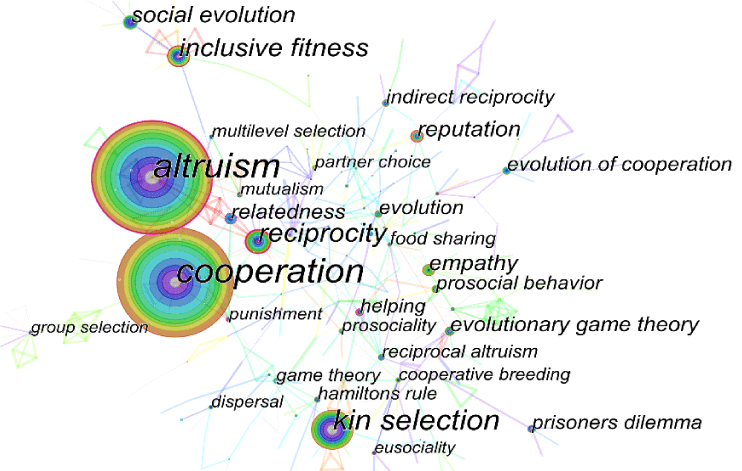
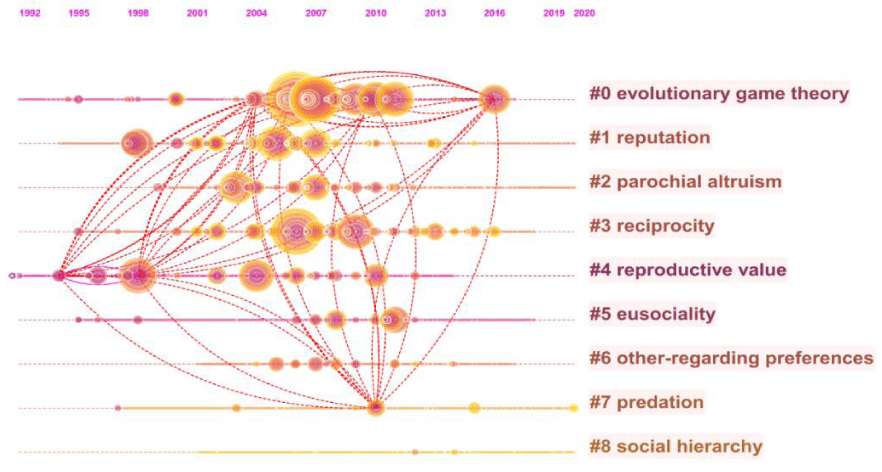
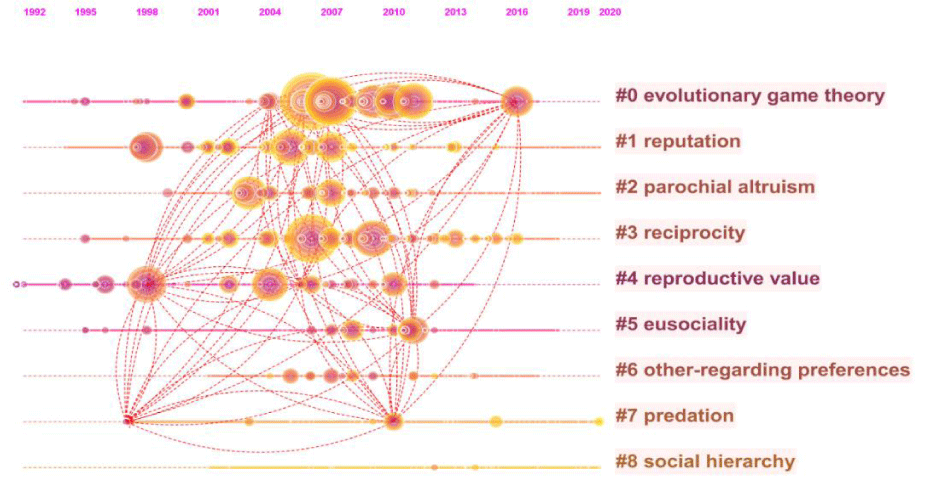
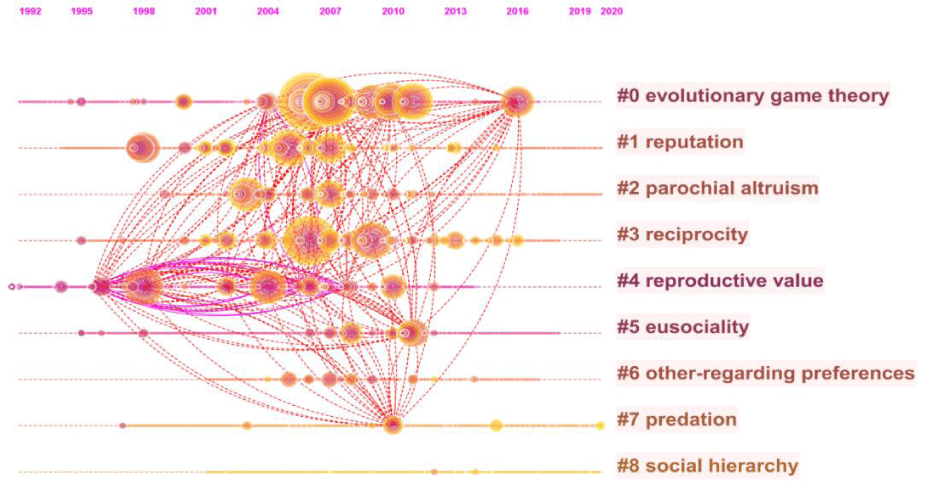
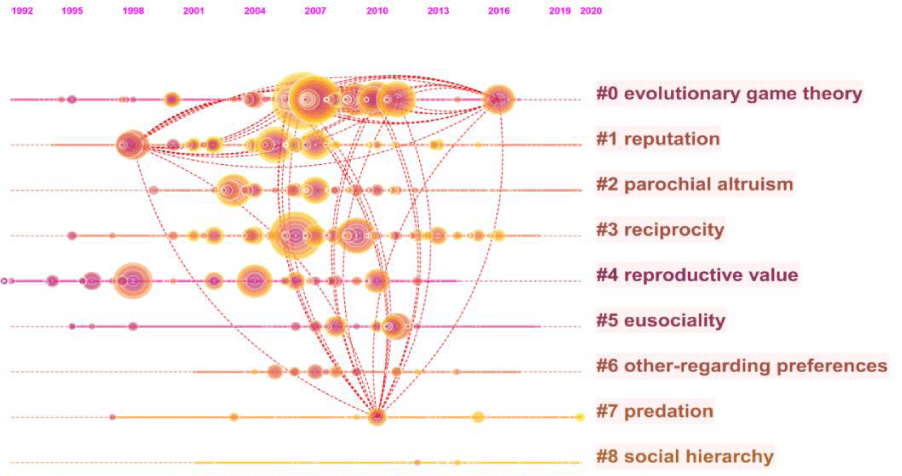
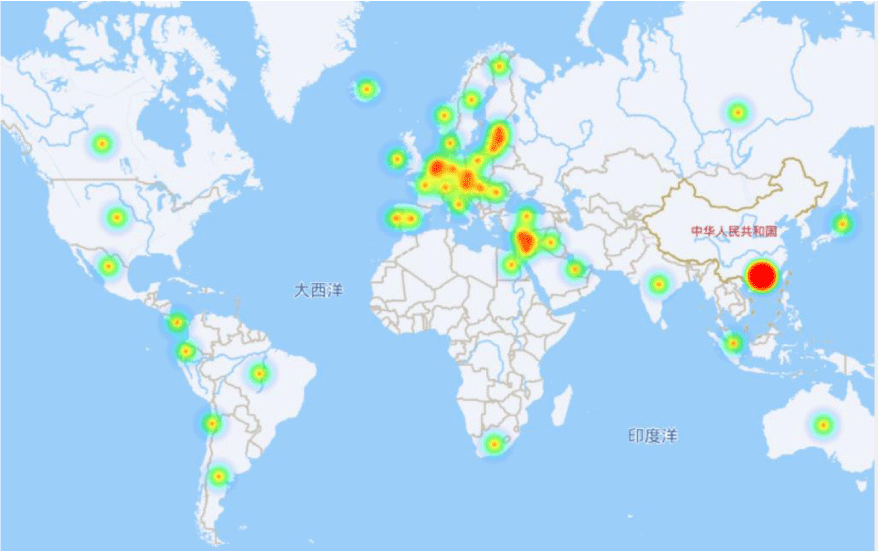

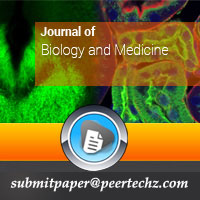
 Save to Mendeley
Save to Mendeley
